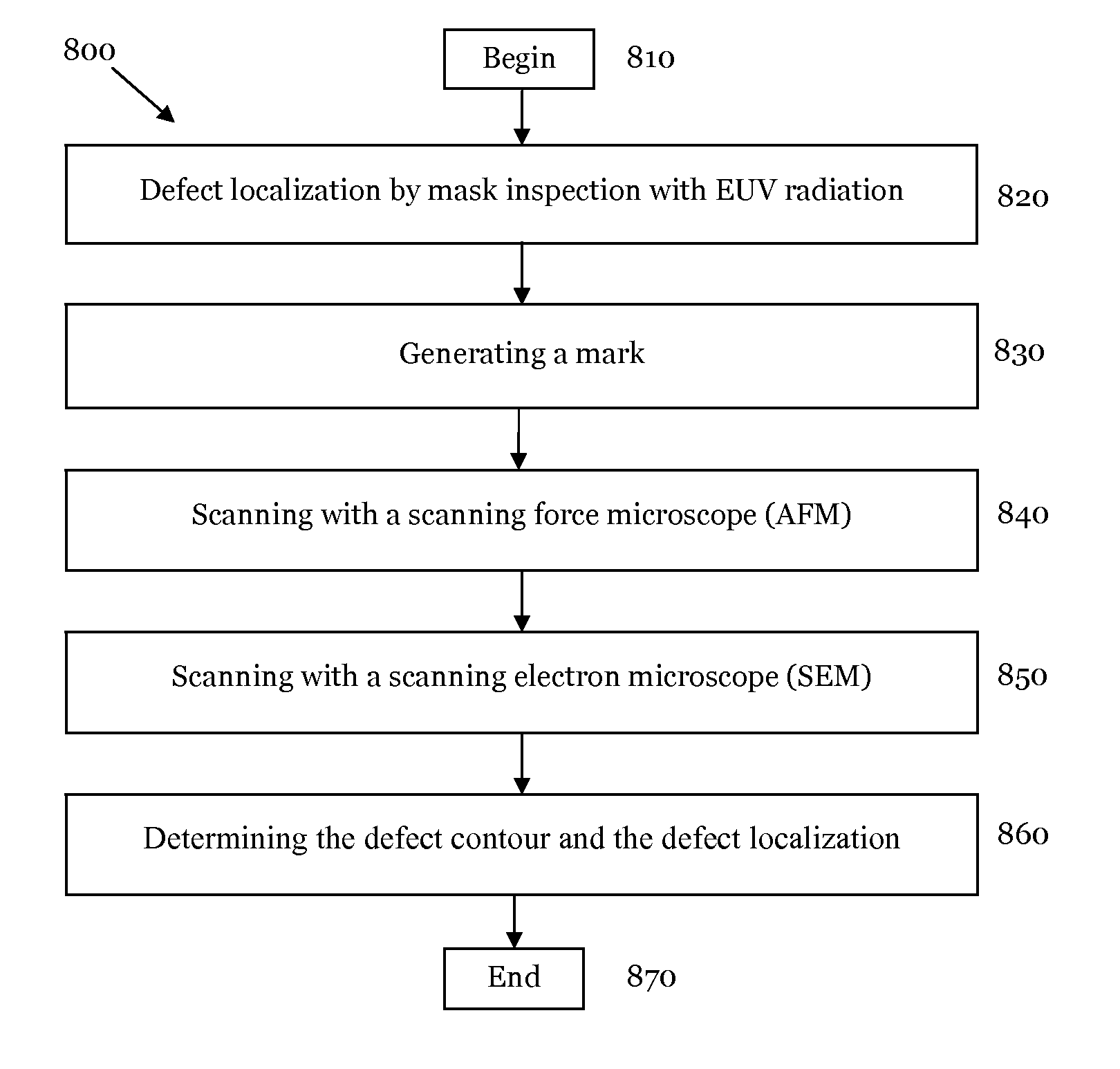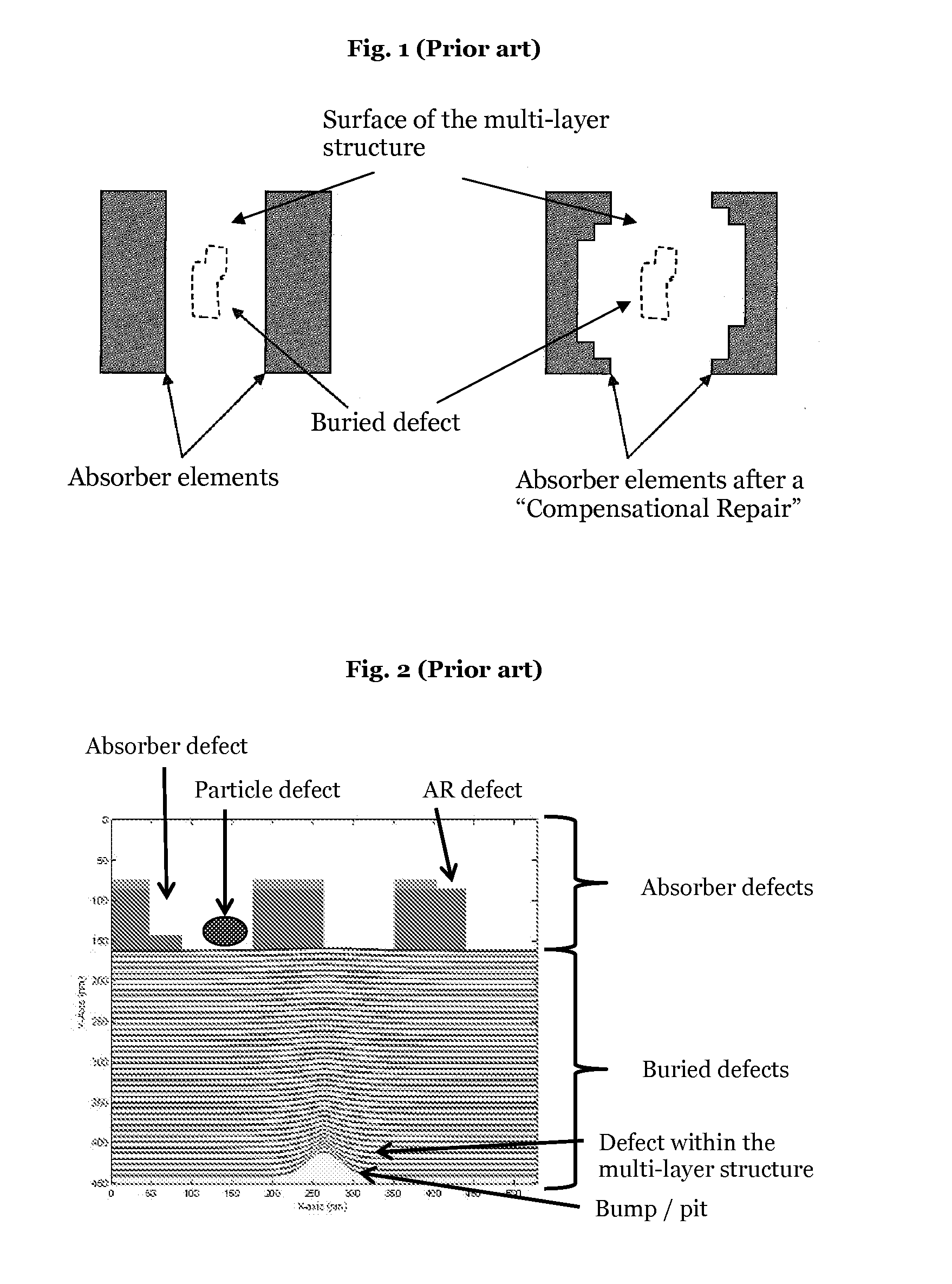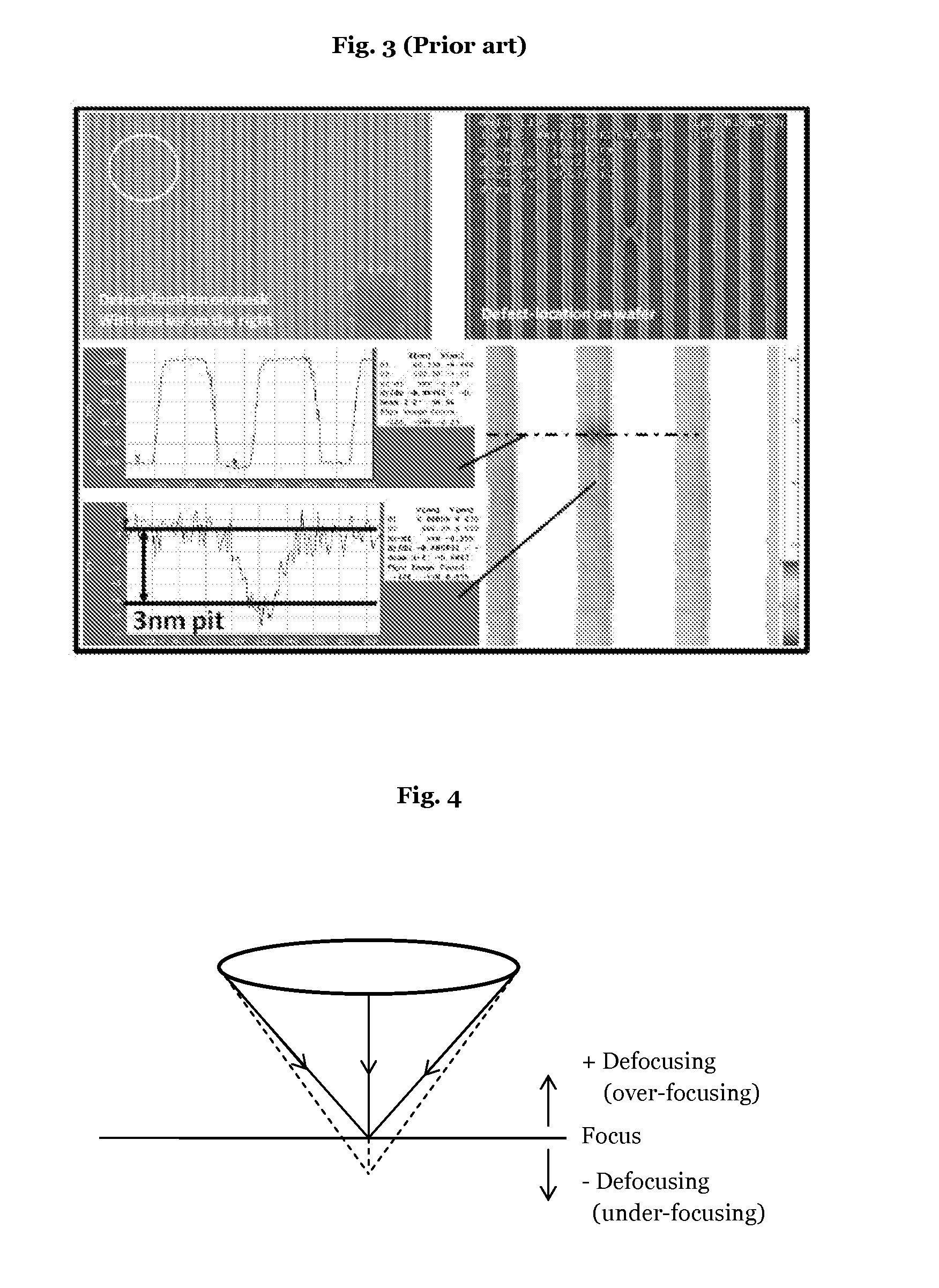Method and apparatus for analyzing and for removing a defect of an EUV photomask
- Summary
- Abstract
- Description
- Claims
- Application Information
AI Technical Summary
Benefits of technology
Problems solved by technology
Method used
Image
Examples
Embodiment Construction
[0093]FIG. 2 gives an overview of the essential defect types of EUV masks. Absorber defects occur if absorber material is available at positions which have to be free from elements of the absorber structure. The inverse situation can also occur, i.e. the absorber material is completely or partially missing at positions which have to be covered with absorber elements. Moreover defects of the anti-reflection (AR) layer which is deposited on the absorber structure and / or dust or dirt particles on the surface of the multi-layer structure can also lead to absorber defects.
[0094]An absorber defect essentially causes an amplitude error in the reflected radiation. Typically, it can be visualized by scanning the EUV mask with a scanning electron microscope (SEM) and can be repaired with a mask repairing system, as for example a MeRiT™ system of the company Carl Zeiss. In this process missing absorber material is deposited by a local deposition process and excessive absorber material is remov...
PUM
 Login to View More
Login to View More Abstract
Description
Claims
Application Information
 Login to View More
Login to View More - R&D
- Intellectual Property
- Life Sciences
- Materials
- Tech Scout
- Unparalleled Data Quality
- Higher Quality Content
- 60% Fewer Hallucinations
Browse by: Latest US Patents, China's latest patents, Technical Efficacy Thesaurus, Application Domain, Technology Topic, Popular Technical Reports.
© 2025 PatSnap. All rights reserved.Legal|Privacy policy|Modern Slavery Act Transparency Statement|Sitemap|About US| Contact US: help@patsnap.com



